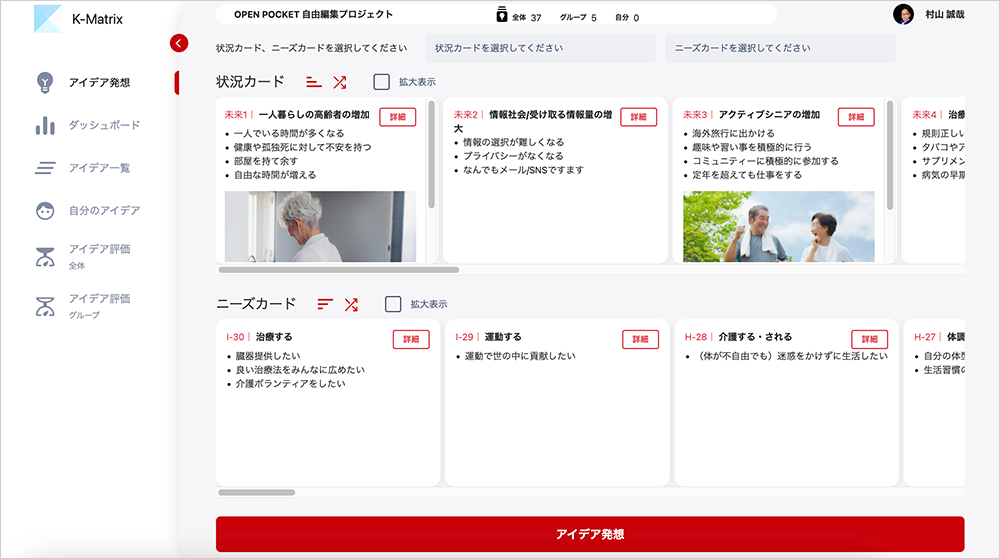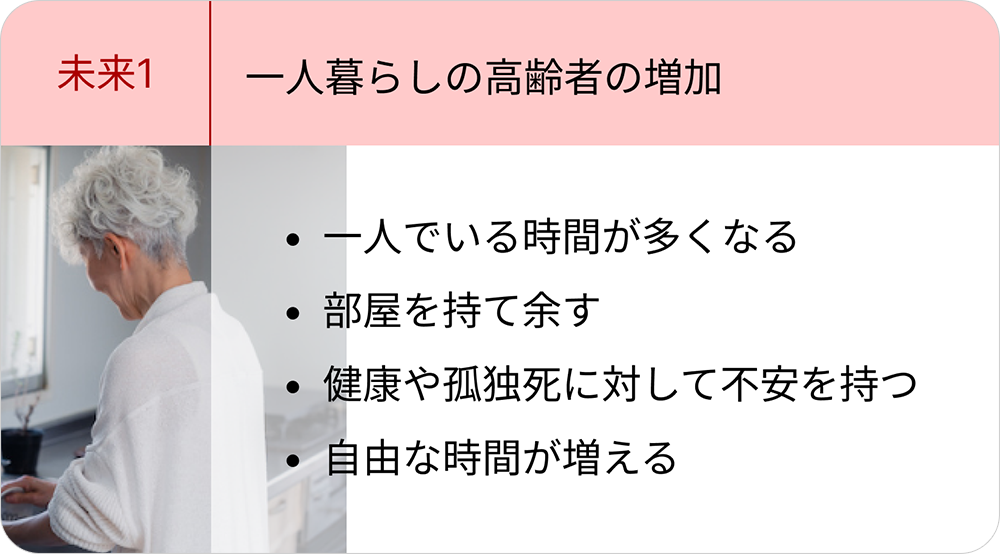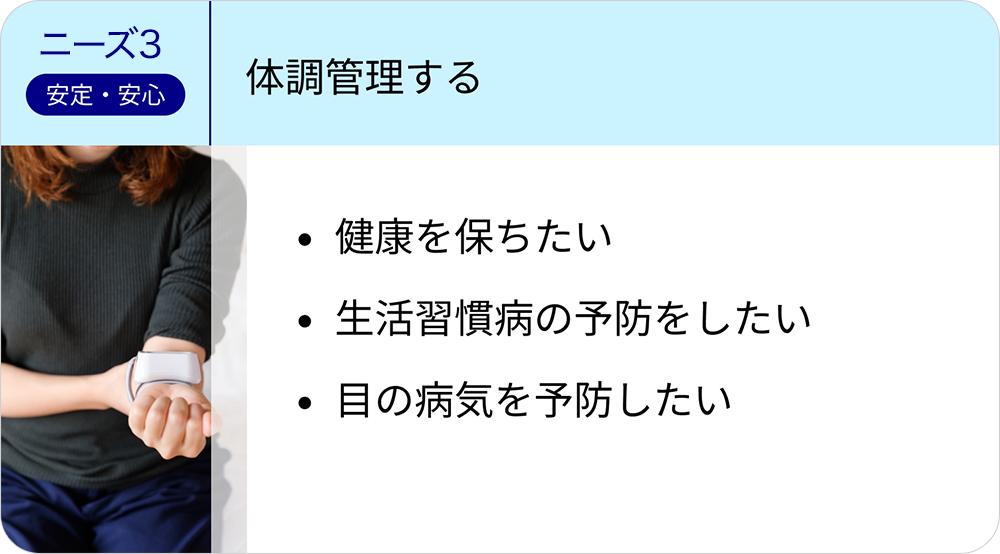Ideas generated with expert assistance are valuable because they allow for broad thinking, including perspectives we might not have on our own. However,
"It can be difficult to brainstorm freely"
"Promoters struggle to grasp the originator's intent"
These are also challenges we face.
This time, we introduce a method for generating ideas independently while expanding your thinking, along with its supporting tool, the "K-Matrix App." We also interviewed a client who actually used it to extract ideas for new products and services.
What is the Idea Generation App "K-Matrix"?
One challenge in idea generation is
- being constrained by existing frameworks
- Overthinking feasibility, leading to settling for ordinary solutions
- Having good ideas but failing to convince others
These are some common challenges.
Ideation isn't something that suddenly emerges from nothing; it's said to arise from some combination of elements. The K-Matrix app forces new ideas by combining two different elements.
The app displays two different pieces of content; in the example below, "Future Lifestyles" and "Consumer Needs" are shown. Sliding horizontally allows you to view other "Future Lifestyles" or "Consumer Needs" entries. It then generates ideas from randomly selected combinations of these elements.
Moreover, selecting truly valuable ideas from a large number of ideas is more difficult than generating them. This app features a survey-style evaluation function, allowing you to rate generated ideas based on novelty and appeal, with results automatically tallied.

Clicking the evaluation input field on the idea evaluation screen allows for a 5-point scale evaluation of appeal and a 3-point scale evaluation of novelty.
For example, what possibilities might arise from the following combination?
An elderly person living alone wants to maintain their health. What "values" are needed in that situation, and what "means" could be used to achieve them?
For example, the following values and means could be considered:
Value: "Maintaining health simply by going about daily life."
(Since the elderly often watch TV regularly)
→ Means: A TV that monitors health status and alerts authorities when feeling unwell
Alternatively, ideas with the same value but different means are also possible.
Value: "Maintaining health simply by living your daily life"
(Ideally, something that works without the person consciously thinking about it)
→Means: A shirt that lowers blood pressure just by wearing it
Different value ideas may also emerge from the same card.
Value: "Maintaining physical health without feeling lonely"
→Means: A system to search for nearby communities of people who want to exercise
You can generate various ideas like these.
By organizing your thoughts and combining necessary elements in this way, you can expect to generate unprecedented new ideas. The K-Matrix app was created to make this idea generation method easily accessible anytime.
At Lintec, which actually used it, over 450 ideas were generated!
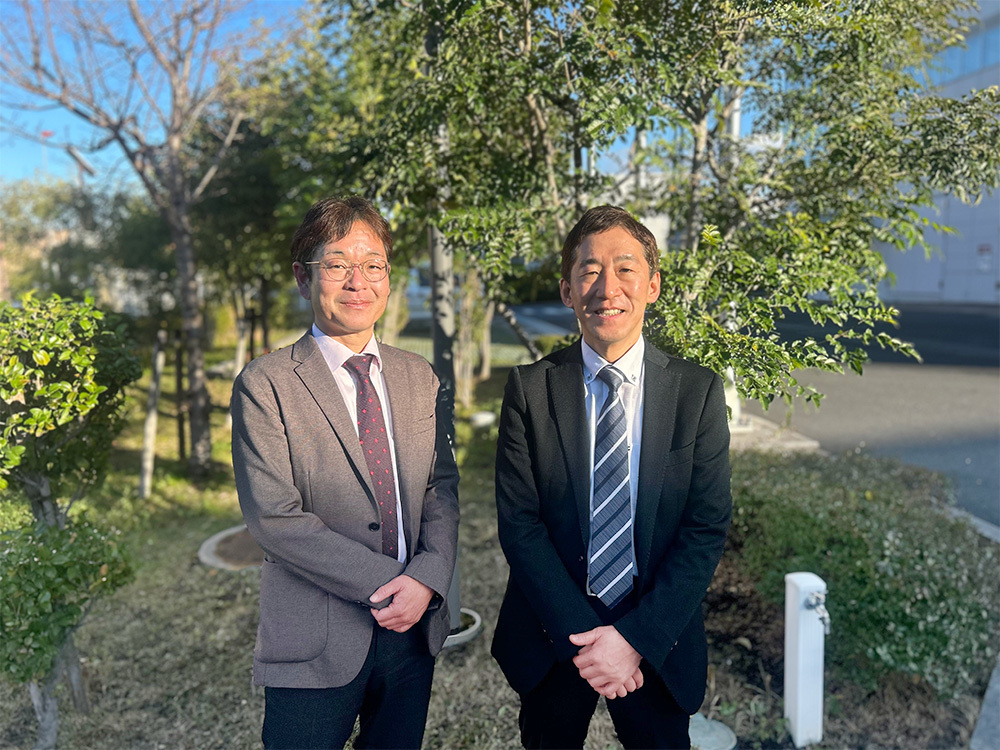
Mr. Yoshitomo Ono (right), Head of Innovation Promotion, Lintec Research Institute; Mr. Seiya Murayama, DENTSU SOKEN INC.
Lintec is a leading company in the adhesive products field. It develops and manufactures a wide range of products, including adhesive papers and films for seals and labels, as well as glass safety films. We asked Mr. Yoshitomo Ono, Head of Innovation Promotion at Lintec Research Institute, about his experience using the K-Matrix app.
(Titles omitted below)
Murayama: I understand Lintec's research institute has employed various methods to generate ideas continuously for innovation. How did you find using the K-Matrix app this time?
Ono: Initially, we didn't expect to generate this many ideas. While our research work demands new ideas daily, our researchers were struggling to come up with them.
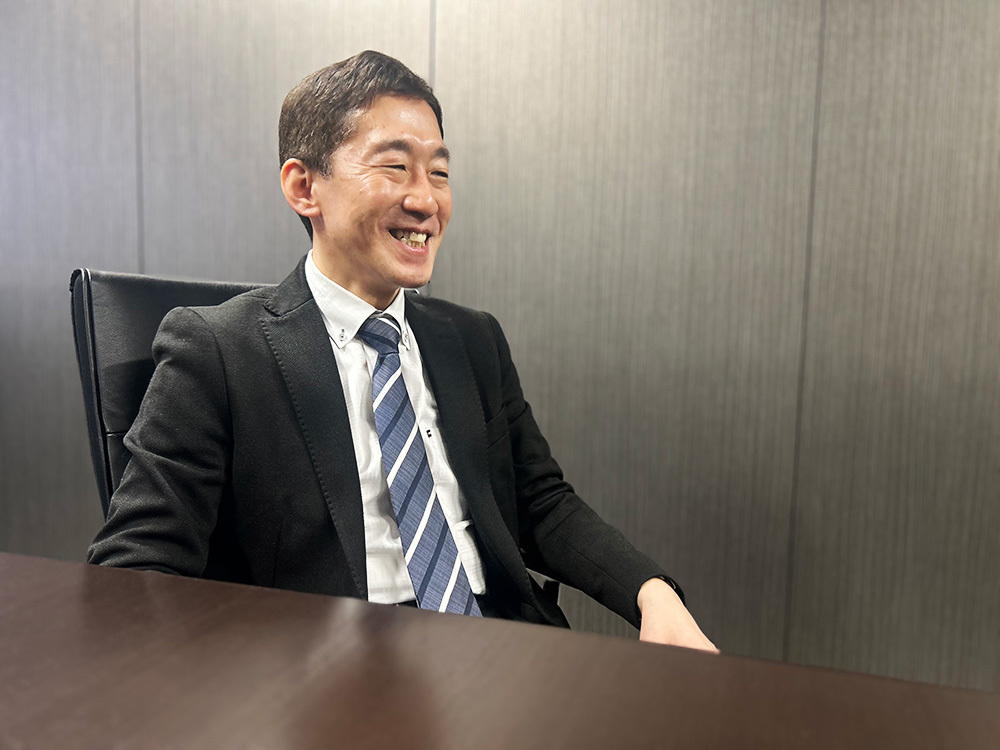
Mr. Yoshitomo Ono, LINTEC Corporation, Research Institute, Innovation Promotion Department Manager
After joining the company, he worked on R&D for general-purpose adhesive products and industrial adhesive products (for automotive and building materials applications). While serving as a laboratory director in corporate research, he led the "New Value Creation Project" conducted with DENTSU SOKEN INC. (then ITID). He is currently engaged in initiatives related to new business creation, DX promotion, and AI utilization within an organization established two years ago.
Murayama: It seems every company faces the challenge that when trying to generate ideas, people tend to overthink various factors, resulting in fewer good ideas surfacing. In that regard, the K-Matrix app simplifies thinking by focusing on just two elements for brainstorming, enabling the generation of more ideas.
Ono: At Lintec's recent idea generation session, over 450 ideas were generated. With that many, deciding which to prioritize for further consideration becomes quite challenging.
Murayama: That's right. Evaluating ideas is another difficult problem. This K-Matrix app allows idea evaluation to be completed entirely within the app. Did you see any ideas in the actual evaluation results that you thought, "This could be commercialized"?
Ono: Yes. There were several that I felt could be seeds for future products. Moving forward, we want to flesh out the technical methods to realize these and bring them to productization.
Murayama: That's excellent. It would be great if researchers could continue to easily generate ideas and produce more and more ideas suitable for productization. In that regard, this K-Matrix app can also be used as a database to generate further ideas. It's not just about storing ideas; it can also accumulate elements to generate the next idea, such as the results of an inventory of in-house technologies or future prediction results. I hope it will be used daily.
Ono: Researchers need to continuously generate diverse ideas every day. In that sense, I believe it also serves as training for researchers.
Murayama: I see. So it's useful from an educational perspective too. Thank you for your valuable time today.
[For detailed information on the K-Matrix app, click here]

